
Click the button to start reading
Mastering The Art Of Leading Remote Teams: A Manager’s Toolkit
The traditional office setting, with its 9-to-5 constraints, is giving way to a more flexible remote environment. But despite having the same responsibilities as in-office managers (hiring, performance reviews, etc.), this new era of remote team management has given managers the huge task of leading a dispersed workforce.
If you’re looking for the best ways to manage a remote team, you’re in the right place. We’ll explore the tactics you should start employing to manage your team more seamlessly. We’ll also shed light on the stark difference between managing in a traditional office and a virtual remote workspace.
With this article, you can evolve into a remote leader, adept at fostering company culture from miles away. You’ll be equipped with actionable insights and strategies, making sure you thrive as an effective manager leading a productive, motivated, and goal-oriented team.
10 Proven Tactics To Effectively Manage Your Remote Team
Just the thought of having to match everyone’s schedule for weekly meetings can already be headache-inducing for a remote manager.
However, all is not lost as you can implement these 10 proven tactics to build a strong remote team that contributes to business outcomes. Take your notepad out, identify the first methods you can apply, and start thinking about how to achieve this with your team.
1. Embrace Digital Communication Tools
With your team members scattered globally, embracing digital communication tools, like Slack, Google Hangouts, Zoom, or Teamly’s chat feature is like building bridges between scattered islands. They act as your virtual office spaces and lifelines, making sure every remote employee stays integrated, informed, and engaged.
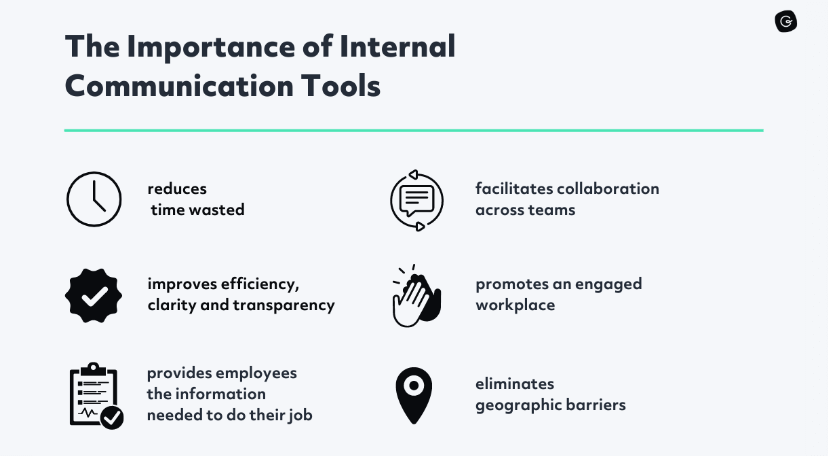
image source: getguru.com
But more than that, they make collaboration between you and your team members seamless despite possibly being on different continents.
Take a travel agency, for instance. It’s a type of company where speed and efficiency are paramount for conversions.
A customer might urgently need a flight change. With tools like Slack Channels for instant messaging or Google Meet for a quick voice call, your team can swiftly coordinate, giving rapid responses to the customer about other cheap flight options available on your website.
For remote companies, especially in fast-paced industries, these communication tools aren’t just convenient; they’re keys to success. They make sure that distance and time zones don’t become barriers to providing excellent service.
2. Set Clear Expectations
Without the tangible boundaries of a physical office, the risk of ambiguity looms large. To avoid this, outline tasks, deadlines, and goals to give your team members direction. When roles are defined, every team member knows their path and the significance of their project activities.
For example, let’s say you’re leading a remote graphic design team for an online product you sell. Setting clear expectations lets each designer know their specific design elements, submission dates, and the overall theme of the project. This clarity ensures cohesive designs that align with the brand’s vision, even without face-to-face interactions.
To achieve this, regularly hold team meetings to discuss objectives and address queries. Plus, fosters an open communication environment, encouraging team members to seek clarifications.
Don’t forget to also provide feedback to guide improvements, making sure everyone is aligned with the team’s vision and direction.
3. Provide Training
Thriving in remote work environments means you have to train and arm your team with the toolkit to set them up for success in the virtual workplace. From mastering tools like Google Drive to honing virtual communication skills, training makes sure your entire team is on the same page.
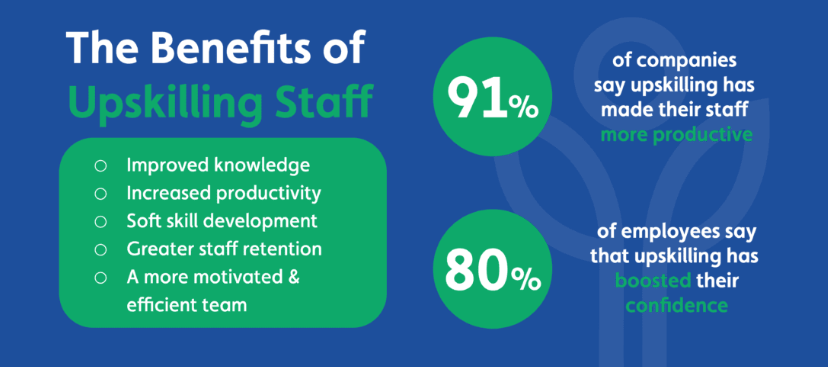
image source: www.businesshealthmatters.org.uk
Additionally, offering resources for skill development helps them become more efficient and it shows that your remote team is valued. This commitment to their career goals fosters loyalty and motivation.
Here’s a scenario: Your team handles business data and analytics, a complicated yet crucial part of any business. With proper training, they can independently interpret complex data, drawing insights that drive decision-making.
For instance, after a workshop on advanced data interpretation, a team member might spot a trend in consumer behavior, leading to a game-changing strategy to boost sales.
Training them also elevates your confidence and trust in their ability to excel in the numbers game and do detailed and accurate work even without the on-site supervision that a traditional office setup offers.
You can succeed in this by identifying the skill gaps of your members and sourcing online courses or webinars tailored to those needs. Use platforms like Coursera or Udemy for specialized training. You should also organize virtual workshops, bringing in experts for live sessions.
4. Monitor Productivity, Not Hours
In the evolving landscape of the remote workplace, the adage “quality over quantity” has never been more relevant. Monitoring productivity over hours is the modern effective manager’s mantra.
Why the shift to this mindset?
Outcomes drive success for businesses, not just the clocked hours. Focusing on tangible results lets you lead a synchronized, results-driven unit.
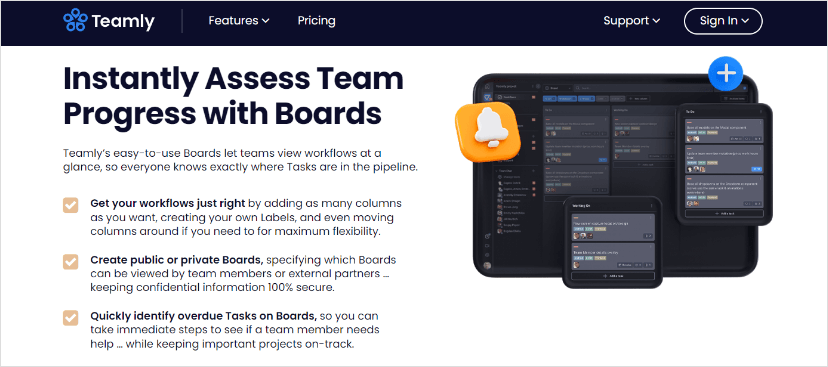
Project management tools like Teamly, Trello, and Asana have made it easier than ever to keep a pulse on project progress, making sure your team members are aligned and goals are met.
Moreover, you can elevate this tactic with Snowflake data cloud. If you’re handling large remote teams of at least 20 members each, you can leverage the platform to develop an in-house project management system. It allows secured data-sharing, as well as real-time data processing.
This lets you see your team’s contributions and project updates in real time. You can also use it to produce reports for team evaluations to check who was the most productive. This real-time insight ensures that collaboration is seamless, even if your team is scattered across the globe.
This approach is transformative because it lets you pivot strategies swiftly, address challenges promptly, and celebrate successes as they happen.
5. Offer Flexible Hours
While the traditional 9-to-5 office hours might work for some, it’s not a one-size-fits-all solution. Thus, promoting flexibility isn’t just a perk, it’s a necessity in remote working environments.
This empowering approach shows that you trust your team to know their peak performance times. It also shows that you value outcomes over strict schedules.
The results? Improved creativity, reduced video fatigue, and a team that feels valued.
Let’s delve into the life of virtual executive assistants. They’re juggling tasks for you and the entire team, from scheduling meetings to managing emails. But they’re based in a timezone where your morning is their late night.
Allowing them to be flexible and choose their most productive hours makes sure they avoid late-night fatigue. This simple task of giving them a choice can be a big deal that lets them handle responsibilities with efficiency and deliver excellent results for you and the team without being forced to work through the night with depleted energy.
But how do you offer flexibility without jeopardizing your projects?
Establish core hours where the entire team overlaps for collaboration and meetings. But allow your team members to choose their start and end times outside these core hours. You should also regularly review and adapt the system, making sure it meets both team and project needs.
6. Do Regular Check-Ins
These check-ins are opportunities for employees to reconnect, realign, and refocus. In a virtual setting, where face-to-face interactions are limited, these sessions become the lifelines that maintain the team’s pulse.
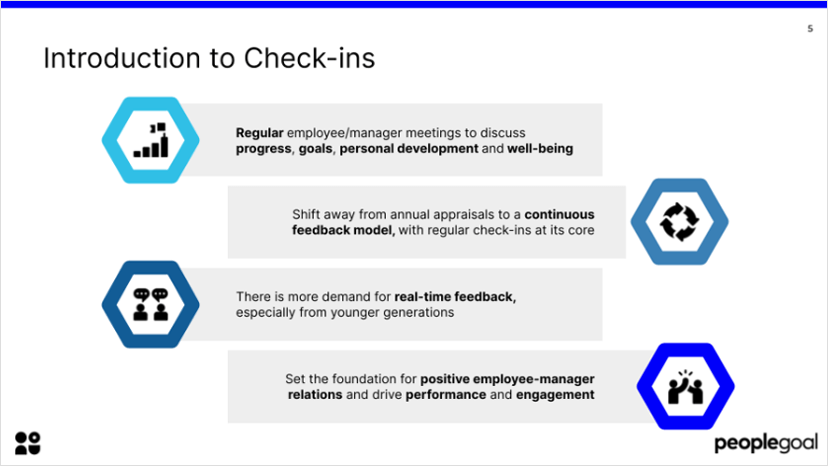
image source: peoplegoal.com
They make sure that you and your team members are on the same page, bridging any communication channels that might have gaps.
For example, let’s say your team is virtually handling a yard management system. In such a setup, a misplaced container or a miscommunicated schedule can ripple into significant operational hiccups.
However, with a weekly stand-up, team members can give updates on container placements, incoming shipments, and potential challenges. This gives everyone a chance to review broader operational strategies so your team can pinpoint if any improvements can be made.
Plus, these regular check-ins ensure that every cog in the system, from the gate personnel to the inventory manager, is synchronized.
To perfect this managerial tactic, create a consistent schedule for weekly virtual meetings using platforms like Zoom or Microsoft Teams. Use tools like Google Calendar to set reminders and ensure team availability.
Start each session with a brief personal check-in, followed by task updates. Encourage open dialogue, allowing team members to voice challenges or share achievements. Then, conclude by setting clear next steps, ensuring everyone leaves with clarity.
7. Address Challenges Quickly
Challenges, especially in a virtual space, have a knack for amplifying if not addressed promptly. A minor technical glitch today could morph into a major project delay tomorrow. Similarly, unchecked communication issues can sow discord, fracturing team cohesion.
However, quickly addressing challenges helps you make sure your team ship stays on course. It’s about being agile, pivoting strategies, or providing resources before a hiccup becomes a hurdle.
This approach not only maintains productivity but also builds trust. Team members know they’re supported, and managers can rest easy knowing they’re ahead of potential pitfalls.
For instance, let’s say a team member is finalizing a sale for a bulk order of solar panel kits for a significant project like a housing development. A housing project’s decision to go solar is a substantial investment, often resulting from months of negotiations and trust-building.
Then, that member discovers a discrepancy in inventory data at a crucial juncture. If the team fails to meet that commitment because of inventory shortages, the client may question the company’s ability to deliver on other fronts, like after-sales service, installation schedules, or warranty commitments and back out of the deal.
As a quick-thinking manager, you immediately address this problem by liaising with suppliers for expedited deliveries or by offering alternative solutions like a discount. These actions guarantee that the proposal remains accurate and it shows the company’s commitment to transparency and customer satisfaction.
To achieve this tactic, you can do the other tactics on this list like having regular check-ins, providing training, and leveraging communication tools for quick fixes.
8. Let Team Members Share
While establishing procedures is vital, recognizing the unique circumstances of each team member is equally crucial. They’re the boots on the ground, understanding the nuances of their work environment and habits.
Inviting their input lets you build a more tailored work process and foster a culture of trust and respect. This approach signals that while the broader goals are set, the paths to achieve them can be co-created. It’s a collaborative effort, where team meetings become brainstorming sessions and Slack messages transform into idea exchanges.
Consider this scenario: You have a team member who has to juggle parental duties in a different timezone, and he proposes using asynchronous communication for certain updates instead of live meetings.
Acting on this suggestion not only accommodates their commitments but also encourages others to share their workflow improvements for a more inclusive remote work environment.
9. Treat All Employees Equally
This encourages a harmonious and productive team environment, especially when it’s your responsibility to manage a mix of in-office and remote employees. If there are any imbalances, it can sow seeds of discontent, causing decreased morale and productivity.
On the contrary, when every team member, whether they’re in the office or working from their living room, feels valued and treated fairly, it boosts collective morale and fosters mutual respect.
So, if your remote workers enjoy the perk of flexible hours, why not extend a version of this benefit to co-located employees? Perhaps they could start their day earlier or later, or maybe have a flexible lunch hour. Doing this levels the playing field, showing that you value the well-being and preferences of all team members.
With this tactic, every single team member, irrespective of their location, feels seen, heard, and valued.
10. Build A Strong Remote Team Culture
A strong remote team culture is the glue that binds dispersed teams. In the absence of physical interactions, a robust company culture becomes the shared space where team members connect.
What can you do?
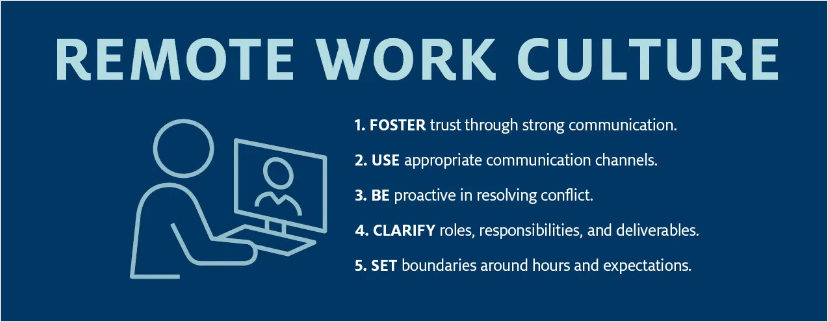
image source: ccl.org
Organize virtual team-building activities, from online trivia games to collaborative brainstorming sessions to forge bonds. Additionally, make it normal to celebrate milestones, be it a project completion or an individual’s achievement, to reinforce the team’s shared purpose.
With this approach, your team members don’t feel isolated. They’ll feel like they’re part of a larger, supportive community where successes are celebrated and challenges are collectively addressed.
Take, for instance, promotions. When a team member climbs the corporate ladder, it’s more than just a personal achievement; it’s a testament to the team’s collective effort.
Organizing a virtual congratulatory meet, sending out celebratory messages, or even a simple shout-out during team meetings can do wonders. When team members see their growth celebrated, it boosts their morale and instills a sense of pride in the entire team.
Following that, let’s discuss remote team management’s importance. This will help you further understand why adapting your strategies is essential and why conventional in-office methods might fall short in a remote setting.
Remote Team Management: Why It’s Important
Remote team management can include leading teams that work from home, in co-working spaces, or even from cafes and other public places.
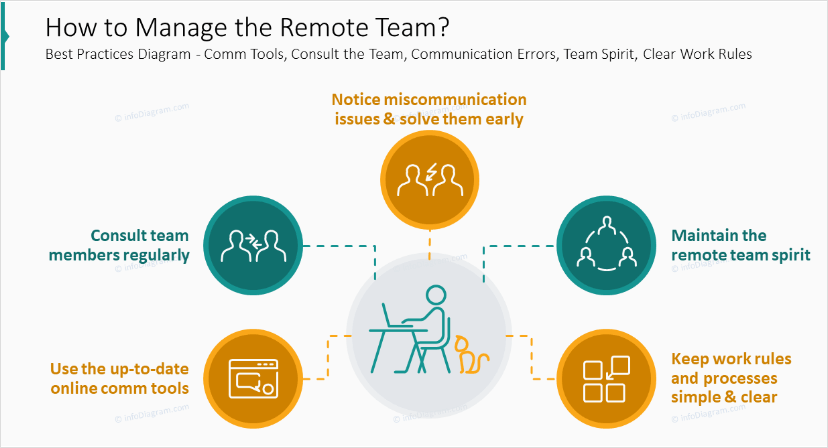
image source: mytasker.com
Guiding a team scattered across cities, countries, continents, and different time zones presents unique challenges but it also offers remarkable opportunities. When managed effectively, remote teams can drive impressive business outcomes, from increased productivity to enhanced innovation.
What’s more, remote managers like you hold the key to making sure your teams stay connected and motivated. When you harness the power of effective remote management, you elevate employee engagement to new heights.
With that, let’s explore the stark differences between handling a team in a traditional office setup and a remote workforce. Grasping these distinctions lets you anticipate scenarios and empowers you to deploy suitable strategies for effectively overseeing a team in a remote work setting.
Differences Between Traditional & Remote Team Management
Navigating between traditional and remote team management is like switching between two distinct playbooks. Knowing how they differ from one another will help you maximize your resources, implement appropriate strategies, and employ the proper tools.
Here’s a snapshot of their differences:
| Aspect | Traditional | Remote |
| Meetings | In-person | Virtual meetings |
| Time Management | Fixed hours | Attention to time zones; flexible hours |
| Tools | Physical tools (e.g., office phone) | Digital tools (e.g., Google Conference) |
| Communication | Face-to-face; occasional emails | Communication guidelines; frequent chats |
| Training | On-site training sessions | Online courses; webinars |
| Problem-Solving | Regular meetings in a conference room | Online video conferencing brainstorming sessions |
| Monitoring | Over-the-shoulder checks | Digital tracking tools |
| Feedback | Immediate feedback during an in-person meeting | Varied turnaround time in remote scenarios. |
Here’s a sample scenario: There’s a critical bug in the feature update for your mobile medical alert system product.
Here’s how a traditional team handles it:
- Immediate Gathering: The manager quickly convenes an impromptu in-person meeting.
- Whiteboard Session: The problem is visually mapped out, with team members suggesting troubleshooting steps.
- Direct Oversight: The manager can walk over to developers’ desks, observe the problem-solving in real-time, offer guidance, and make sure everyone is on task.
- Physical Tools: Hardware related to the medical alert system, like testing devices, is readily available in the office for immediate hands-on testing.
Here’s how your remote team should handle it:
- Virtual Meeting: The manager schedules an urgent virtual video call using Zoom or Teams.
- Screen Sharing: Team members share their screens to demonstrate the bug and potential fixes, putting everyone on the same page.
- Digital Collaboration: Tools like Teamly and Trello help track the problem-solving process, making sure everyone knows their tasks and the project’s progress.
- Turnaround Time: While solutions might be implemented quickly, the feedback loop might have slight delays because of varied time zones or work schedules.
Conclusion
Remote teams are here to stay. Thus, mastering remote team management is more than just adapting to current trends, it’s about paving the way for sustainable, long-term success. These strategies can guide you in building a strong foundation to uphold the structure of effective remote leadership.
In addition, applying these techniques lets you foster a cohesive, productive, and motivated team, irrespective of geographical boundaries. However, the journey doesn’t end here.
Continuous evaluation and adaptation of management strategies are vital to stay ahead of challenges and leverage new opportunities.
Are you ready to develop and maximize your remote team’s potential?
With Teamly, you get a smart all-in-one remote team management platform. It lets you manage and monitor workflows, as well as communicate with your team in real time with its chat feature. Don’t wait any longer and sign up to Teamly now to elevate your leadership game.
About Author:
Burkhard Berger is the founder of Novum™. He helps innovative B2B companies implement revenue-driven SEO strategies to scale their organic traffic to 1,000,000+ visitors per month. Curious about what your true traffic potential is?
















